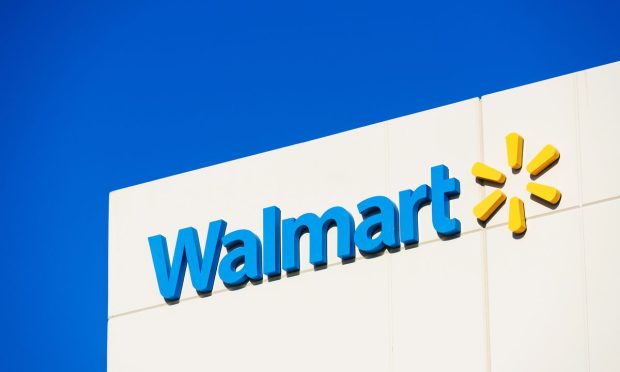It’s Just Another Tuesday at Walmart and Its 4,700 Micro-Fulfillment Centers

It may say “Amazon Prime Day” on many consumers’ calendars today, but in the world of Walmart, where 90% of Americans still live within 10 miles of one of its stores, it’s just another Tuesday for the brand that is so closely tied to “everyday low prices.”
In fact, the retail giant says it has already been running sales, rollbacks, discounts and deals for months now and that there are no plans to change that; not today, tomorrow or ever.
“Walmart’s history — the core of the company — has been inflation fighters for 60 years,” Jaré Buckley-Cox, vice president of Walmart Fulfillment Services (WFS) told PYMNTS Editor-in-Chief Matt Nesto, before pointing to the retailer’s “4,700 micro-fulfillment centers” as the key competitive advantage that allows Walmart to get goods close to customers in way that no one else can.
If you believe, as Buckley-Cox does, that assortment, price and the ability to win the final mile delivery contest is the recipe for success in the omnichannel retail era, then Walmart’s digital transformation, along with the help of its 2-year-old WFS logistical proposition, should be taken very seriously.
“The combination of being able to use our stores along with our fulfillment centers, and combine those factors, that’s how we’re going to be able to unlock the low cost as well as the speed,” she said of the retailer’s ongoing integration effort. “We think we’re uniquely positioned on a few different fronts to continue to grow market share. Number one, we think the current economic times are an advantage for Walmart.”
SKUs Me
In many ways, Buckley-Cox said, the growth of Walmart is directly tied to the growth of sellers who list goods on its site, and in turn, the continued rise of bar-coded items, better known as stock keeping units or SKUs.
As much as the relatively new WFS unit is tasked with finding the best way to move all that food and other stuff to where customers want it — whether in-store, at-home or the recently expanded in-fridge option — and at a pace of their choosing — via drone, same-day, next day, two-day etc. — adding assortment and new sellers is a companywide mission.
To that point, the company just wrapped its largest “Open Call” event ever earlier this month where it added an additional 330 new sellers and a range of products to its stable as it marches towards a goal of growing the percentage of orders that it fulfills through its stores, a metric that it does not currently disclose.
In some ways, there’s a “Field of Dreams” — “if you build it, they will come” — mentality in place at WFS in that the logistics unit believes that as long as Walmart has the goods and customers can find them, then they will buy them, especially if there’s a better price or a faster, more convenient delivery option nearby.
“So, the number one thing we’re focused on is how do we actually add to assortment on behalf of our customers. It’s one of our key metrics that we look at,” Buckley-Cox said. “Then the second thing is … since the day I came here … to differentiate ourselves in the market and build a platform that is for sellers and built by sellers.”
On that last point, WFS has offered incentives — and continues to solicit vendors — to try out its service, an investment that appears to be paying off as Buckley-Cox said the business currently has a seller retention rate of over 90%.
“So, incentives are working in the sense that they get you to try the [WFS] program and once you get here you seem to really like it and you stay,” she said, adding that she is “super proud” of what the program has achieved over the last two years. “[The seller retention rate] is very high, and the vast majority of all of our sellers that join WFS, once they place a SKU into the program, they stay in the program and continue to add to their SKUs and continue to deepen their penetration with WFS.”
Born Out of the Pandemic
As much as Walmart may be doing its own thing for Prime Day this year, the company is clearly always watching Amazon and trying to slow its 56.7% share of domestic eCommerce as well as its growing share of total retail spend, which PYMNTS data showed pushed Amazon into the lead last year, after over a decade of narrowing a gap that once favored Walmart by more than a 4-to-1 margin.
To do so, Walmart, by its own admission, has had to become an increasingly digital business, a shift that has seen a thousand different revisions including the recruitment of Buckley-Cox from an eight-year logistics and delivery career at Amazon in 2018 as well as the launch of WFS in 2020 in the throes of the pandemic and unprecedented changes in consumer shopping habits.
“If you think about the timing of [the launch] of Walmart Fulfillment Services, it was perfect for Walmart at the time,” Buckley-Cox said, pointing to an ongoing digital transformation strategy that started long before this year’s Prime Day and will continue long after it has passed.
“[Customers] expect to always get the best value for their money [at Walmart], but they also want that ease and convenience,” Buckley-Cox said, “and that’s part of what we’re able to offer with this integration and using our stores as micro-fulfillment centers.”
For all PYMNTS retail coverage, subscribe to the daily Retail Newsletter.
